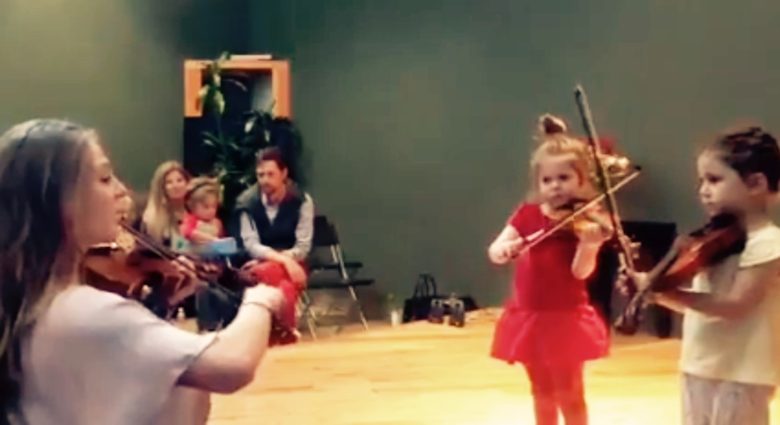The Magic of Singing
Research based methods of vocalization including singing note names, fingerings, solfege, neutral syllables, and lyrics have been used in pedagogy, effecting performance achievement, aural-visual discrimination, aural recognition, and error detection (Bernhard, 2003).
In my personal experience these same vocalization methods have immediately improved intonation, bowing techniques, rhythmic patterns, and phrasing/overall musicality. (Specific cases include students ages 3-18.)
My students and I will work on a passage numerous times. We discuss and attempt a variety of ways of “fixing” the issue at hand. I demonstrate, we play the passage together, then I have an epiphany…”let’s sing it!”
Singing is magic! After only a few times singing the passage, in whatever fashion they choose, the primary problem is no longer existent. Now of course, it won’t last without repetition of singing and playing, singing and playing, and more singing and playing, but it’s still magic! Just try it.
At the Creative Strings Workshop, Christian Howes also discusses singing as a form of practice and ear training. Think about the difference between singing then playing and playing then singing. You can sing a jazzy lick like Aretha Franklin, though when you pick up your instrument, it still sounds like Mozart. Bridge the gap between your ear and your instrument through vocalization. Connect with your voice to connect with your instrument.
Practice ideas: 1) Sing a fixed note, play a simple melody. 2) Sing the melody, play a fixed note. 3) Sing third above or below in patterns. 4) Sing a baseline and pluck simple chords.
Comment below or e-mail me at [email protected] with more questions.

Brains in action!
Absolutely!